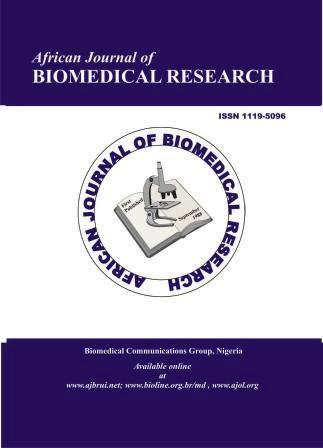Behavioral and Biochemical Indices of Neurotoxicity in Jimson weed Administered Rats
DOI:
https://doi.org/10.4314/Keywords:
Food contaminant, Neurotoxicity, Oxidative stress, alkaloid extractAbstract
This study examined the effect of alkaloid extracts from leaf and fruit of Jimson weed (Datura stramonium L; a toxic food
contaminant of global reputation) on cognitive function, antioxidant status and activities of critical enzymes of monoaminergic
and cholinergic systems of neurotransmission in rats. Alkaloid extracts were prepared by solvent extraction method. The gas
chromatograph coupled with mass spectroscopic (GC-MS) characterization of the extracts was also carried out. Thereafter, rats
were administered 100 and 200 mg/kg body weight (p.o) of extracts for thirty days. Prior to termination of the experiment, the
rats were subjected to spontaneous alternation and hole-board behavioral tests. Thereafter, rats were sacrificed and activities of
acetylcholinesterase (AChE), monoamine oxidase (MAO) and antioxidant enzymes (superoxide dismutase (SOD), glutathioneS-transferase (GST) and catalase), as well as malondialdehyde (MDA) and total thiol (TSH) contents of their brain homogenates
were determined. The results showed that rats administered the extracts exhibited reduced memory index and also exhibited
increased level of anxiety-like behavior. Furthermore, rats administered the extracts exhibited significantly reduced levels of
brain AChE, MAO, SOD, catalase and GST activities, reduced amount of brain TSH and elevated brain MDA content compared
to control. Results from the GC-MS characterization revealed the presence of hyoscyamine (atropine), scopolamine,
amphetamine, cathine, phenlyephirine and Tropine trifluoroacetate among others in the extracts. Therefore, the alterations in
cholinergic, monoaminergic and antioxidant systems in brain of rats administered fruit and leaf alkaloid extracts of Jimson weed
could be one of the major biochemical mechanisms underlying their ability to induce impairment of cognitive functions which
could be significantly linked to their constituent alkaloids.










